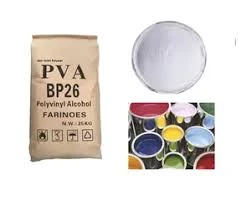Understanding Construction Adhesives An Essential Component in Modern Building Projects
In the ever-evolving world of construction, the materials used are paramount to the integrity and durability of any structure. One such material that has gained prominence over the years is construction adhesive. This versatile bonding agent is essential for a wide range of applications, facilitating everything from the assembly of structural components to the installation of finishing touches. In this article, we will delve into the different types of construction adhesives, their applications, and best practices for use.
What Are Construction Adhesives?
Construction adhesives are specially formulated substances that bond together various materials used in construction. Unlike traditional adhesives, which may focus on bonding smaller objects, construction adhesives are engineered to handle the demands of larger projects and withstand environmental stresses. These adhesives are available in various forms, including liquid, paste, and foam, and can bond materials such as wood, metal, concrete, and plastic.
Types of Construction Adhesives
1. Polyurethane Adhesives Widely used in construction, polyurethane adhesives offer exceptional strength and flexibility. They are resistant to moisture and can bond dissimilar substrates, making them ideal for outdoor projects and areas exposed to changing weather conditions.
2. Epoxy Adhesives Known for their superior bonding strength, epoxy adhesives are often used in heavy-duty applications. They provide excellent resistance to chemicals and high temperatures, making them suitable for industrial settings.
3. Acrylic Adhesives Quick-curing and highly versatile, acrylic adhesives can bond various materials. They are often used for tasks where speed is essential, such as in flooring installation or tile attaching.
4. Silicone Adhesives Commonly used in sealing and waterproofing, silicone adhesives are flexible and durable. They are perfect for applications where movement is anticipated, such as in joints or between dissimilar materials.
5. PVA (Polyvinyl Acetate) Adhesives Typically used for woodworking, PVA adhesives are water-based and easy to clean up. They are ideal for indoor projects, especially for bonding wood components.
Applications of Construction Adhesives
Construction adhesives have a multitude of applications, each tailored to specific needs
- Structural Bonding They are commonly used to bond wood, metal, and concrete in structural applications, providing a strong and durable hold for beams, trusses, and frames
.construction adhesive

- Flooring Installation Adhesives are fundamental in laying down various types of flooring, including laminate, hardwood, and tiles. They ensure proper alignment and reduce the risk of warping or movement.
- Paneling and Molding Whether it’s wall panels, crown molding, or baseboards, construction adhesives provide the necessary bond for a clean and professional finish.
- Roofing In roofing applications, adhesives are used to bond various materials like shingles, membranes, and insulation, thereby enhancing weather resistance.
- Landscaping and Exterior Projects Adhesives are also beneficial in landscaping projects, like creating stone pathways or securing outdoor features that are exposed to the elements.
Best Practices for Using Construction Adhesives
To achieve the best results when using construction adhesives, several best practices should be followed
1. Surface Preparation Ensure that the surfaces are clean, dry, and free from contaminants. This facilitates a better bond and enhances the performance of the adhesive.
2. Follow Manufacturer Instructions Each adhesive product comes with specific application guidelines. Adhering strictly to these instructions is vital for achieving optimal results.
3. Temperature and Humidity Considerations Environmental conditions can greatly influence adhesive performance. Use adhesives in the recommended temperature range and avoid application in extreme humidity conditions.
4. Curing Time Allow adequate curing time for the adhesive to set properly before putting the bonded materials under stress.
5. Test Bonds When in doubt, performing a small test bond can help gauge the adhesive's effectiveness with your specific materials.
Conclusion
Construction adhesives play an invaluable role in the building industry, providing strength and flexibility across numerous applications. With advancements in adhesive technology, contractors and builders now have an extensive range of options to choose from, catering to diverse material needs and various environmental conditions. By understanding the different types of adhesives, their applications, and the best practices for use, one can maximize their effectiveness and ensure the success of any construction project. Whether it’s a residential renovation or a commercial build, the right adhesive can make all the difference.
-
Rdp Powder: Key Considerations for Wholesalers in the Building Materials IndustryNewsJul.08,2025
-
Key Considerations for Wholesalers: Navigating the World of Hpmc - Based ProductsNewsJul.08,2025
-
Hpmc Detergent: Key Considerations for WholesalersNewsJul.08,2025
-
Key Considerations for Wholesalers: China Hpmc For Tile Adhesive, Coating Additives, Concrete Additives, and MoreNewsJul.08,2025
-
Crucial Considerations for Wholesalers: Navigating the World of Construction MaterialsNewsJul.08,2025
-
Key Considerations for Wholesalers Sourcing Additive For Cement, Additive For Concrete, Additive For Putty from Additive Manufacturer Shijiazhuang Gaocheng District Yongfeng Cellulose Co., Ltd.NewsJul.08,2025




